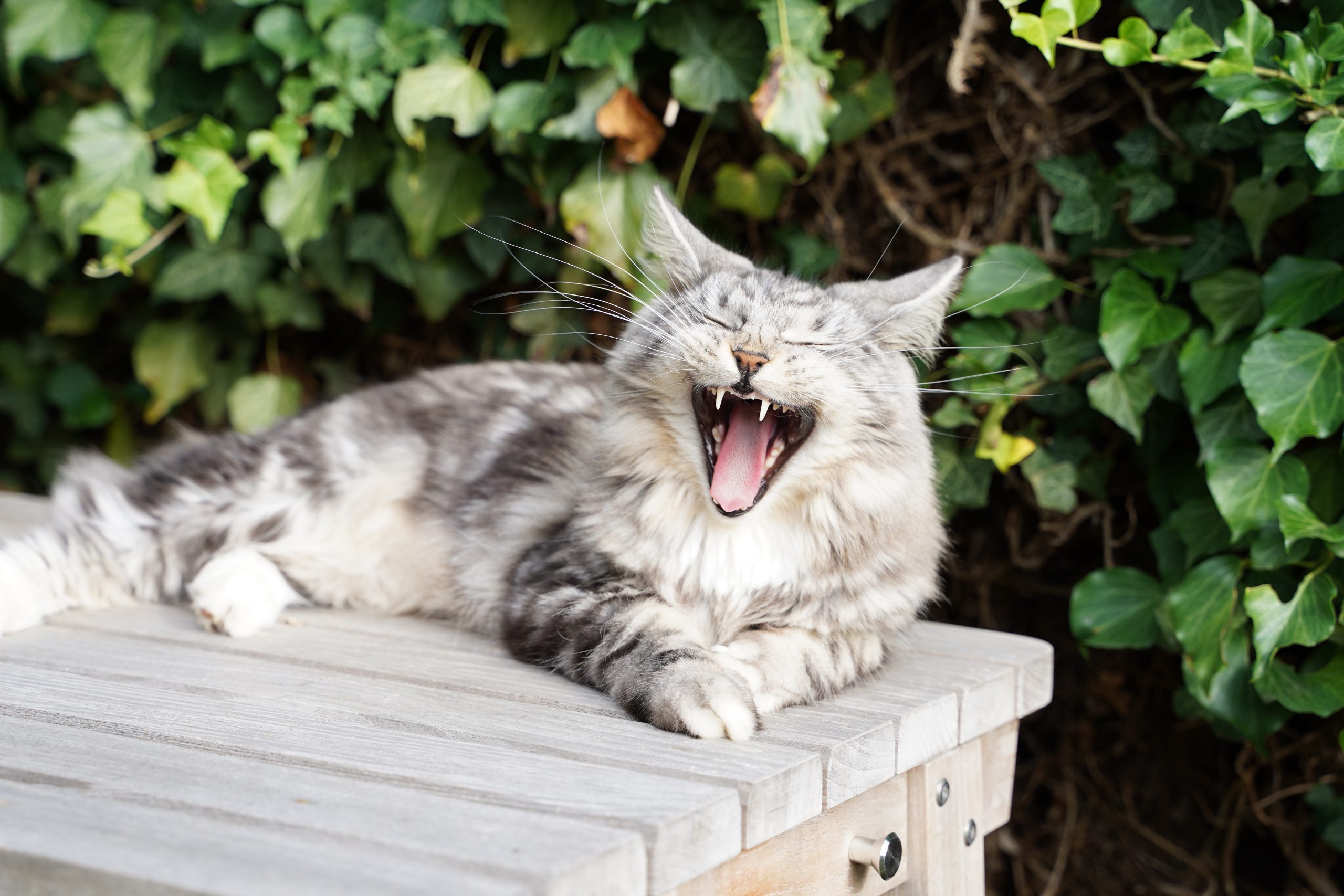
Why do I need to brush my cat or dog’s teeth?
The simple answer to this question is that brushing your pet’s teeth helps to prevent dental disease. Just as in humans, food gets stuck in the teeth of cats and dogs, bacteria in the mouth then feed on the food and form plaque and if this plaque is not brushed off, it becomes mineralised and hard, forming tartar.
Tartar protects bacteria and creates a rough surface that is easier for food to stick to. It is at this stage that the body’s reaction kicks in, often leading to gingivitis or inflammation of gums, soft tissue damage, infection, abscesses and even bone loss.
Dental disease can be devastating
The sad truth is that pets suffering from dental disease are in a lot of pain (pets don’t show pain like humans do so it may take a long time for pet parents to even realise there is a problem). Often the pain can be so severe that pets stop eating altogether. Unfortunately, dental disease is often caught late and once it has advanced, there is little that can be done to relieve or cure it. On top of this, research has also shown there is a strong link between dental disease and heart disease.
So, all in all, prevention of dental disease is far better than cure.
Prevention means avoiding plaque build-up
The goal is to prevent plaque build-up in the first place since tartar is impossible to remove without a dental scale and polish (which for pets, often involves an anaesthetic). There is nothing that removes plaque and prevents a build-up like brushing does and so it is necessary.
How to brush your pet’s teeth
It’s not always easy to brush your pet’s teeth but it is far easier to get into the habit (for you and your pet) if you begin as early as possible, when your pet is a kitten or puppy. Ideally you want to get to a stage where you brush every day or every second day.
- Sit behind your pet, with their face looking away from you. Lift the lip with one hand and use the toothbrush with the other hand.
- Use a good quality pet toothbrush that is suitable for your pet and their breed (small heads and long handles work well for dogs with a long snout like a German Shepherd; a Finger Brush works for a cat or flat-faced dog). Also use pet toothpaste -it tastes good, contains anti-bacterial agents and has an additional abrasive action.
- If your pet isn’t used to it, start with brushing just one tooth! Eventually you want to get to three brushes, on each side of the month and the front.
- Focus on the teeth at the back of the mouth – this is where the food often gets stuck.
- If you are having any trouble, ask your vet for his or her advice and to demonstrate their technique.
NOTE: never use a human toothpaste. It is not suitable for pets. Pets don’t spit out the toothpaste and as most toothpaste contains fluoride, this can be highly toxic.
What to do if your pet won’t let you brush their teeth
If you are only starting to brush later in life, some pets just will not accept it! In these cases, we would recommend an oral gel that has some antibacterial qualities.
Important factors when it comes to dental health for pets
- Invest in a high-quality diet: it is more likely that your pet will suffer from dental problems if they are fed table scraps (bacteria love sugars). We highly recommend investing in a specially formulated, balanced diet.
- Be careful with bones and hooves: vets often encounter dental fractures, enamel wear or gum lacerations as a result of pets chewing on bones or hooves. If you are concerned rather consider letting your pet chew on a top quality, durable rubber chew toy or raw hide.
- Be wary of bad breath: contrary to popular belief, pets shouldn’t have bad breath (unless, of course, they have just eaten fish or the like), but it shouldn’t be an ongoing problem. Bad breath is often a sign that your pet needs a dental check-up.
- If your pet’s gums are inflamed, don’t start brushing. To avoid causing any pain, head to the vet for a check-up if your pet has red or bleeding gums or yellow or brown teeth.
- Regular vet check-ups – by the time you pick up a dental problem, it will probably be too late. The best thing to do is to book regular vet check-ups, your vet will know what to look for and will be far more likely to pick up a problem before it gets serious.
Products you need to take care of your pet’s teeth
- A toothbrush that is suitable for your pet.
- Toothpaste that your pet might even like.
- Chew toys that won’t damage the teeth. There are lots of fantastic toys on the market.
- Dental treats for pets made with a crunchy cereal shell and breath-freshening centre.
Original article: https://absolutepets.com/blogs/articles/dental-care-for-pets-what-you-need-to-know

